Natural Cures For Knee Pain
Get rid of knee pain with the following home remedies for knee pain. These natural remedies helped my close ones and 1000’s of people worldwide.
Ok…it takes longer to cure knee pain…but it works…and it doesn’t cause side effects!
These natural remedies for knee pain helped even those who used walking sticks…today they walk without them.
Use these natural cures for knee pain and you will experience 100 % relief of knee pain:
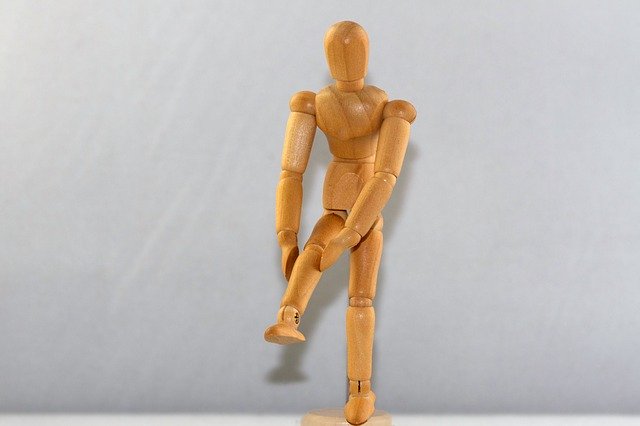
1. Clay Poultice Cure Knee Pain
Clay is a mineral compound that was formed thousands of years ago. Clays contain large amounts of minerals that are essential for the functioning of the human organism ( in montmorillonite clays, for example, we can find up to 75 different minerals), which may explain the many healing properties of clay. It can be used internally and/ or externally.
What Is Clay Good For
Clay is used externally as a clay poultice, a mud pack or in a bath and in skin care recipes for treating knee pain, joint pain, arthritis, hot inflammatory pain, to alleviate headaches, to reduce tumor inflammation and areas of fluid retention caused by trauma, infection or generalized edema, for skin problems such as psoriasis,… Internally is used for bone rebuilding, gastrointestinal problems, candida, detoxification, food poisoning, ‘sour’ stomach, cholera, dysentery, chelation therapy ( CT is the use of substances called chelators in order to remove toxic metals such as mercury, arsenic, and lead, from the body, so that they are converted into chemically inert form which is eliminated without any further interaction with the body ),…
Due to its chemical structure, clay has extremely good absorption and ion exchange power. Microscopic fine granules bind water and other substances to their cellular structure. When these cells swell, they easily penetrate a cell of potentially harmful substances (radioactive elements, heavy metals, excess water,…).
How Clay Works
Clay acts antiseptic, anti-inflammatory and anti-infectious, and in addition, it encourages the renewal of healthy cells. It is believed that regardless of the place of application, it is directed to the focus of the disease and is anchored there, but when it is excluded, it takes away the pus, toxins,…
It is believed that the clay functions in a comprehensive manner and provokes processes that are spinning all over the organism, and therefore recommend that the treatment with clay does not begin if we do not intend to use it continuously for a long time.
How To Use Clay For Relieving Knee Pain
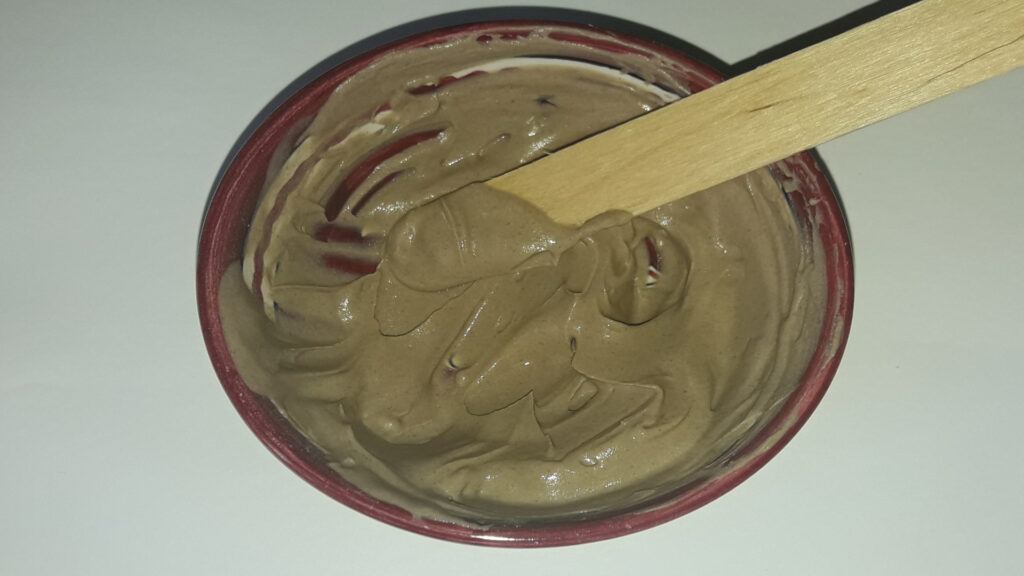
I advised the use of clay to many people who suffered from knee pain, including my mother in law. Everyone was skeptical when I explained to them the benefits of using clay for this purpose. The effects are not visible overnight, it requires perseverance. For knee pain, clay should be used daily as clay poultice. A palm of clay is the right amount to use it as a poultice with a duration of 30 minutes to a few hours daily. After regular application of clay, they all began to notice improvements in knee flexibility and an overall improvement in the condition. Some of them even used a walking stick before starting therapy. When they started the therapy and if they persisted, most of them experienced significant improvements, some of whom even stopped using the walking stick. The results are on average visible after a month of regular application of clay on the knee. Many of those who used the walking stick reported that after 6 months of regular use of clay, they do not need anymore. My mother-in-law had constant pain in her knee before treatment, mobility was limited, walking was a burden to her and she was sentenced to surgery. Then I advised her to use clay poultice. After a month, her knee pain disappeared, the mobility was almost normal and finally, she could afford a longer walk. After three months of regular application of clay, the therapy was stopped because it was no longer needed. Doctors were surprised at the results, so the operation was not necessary. Today her knee is normal, she can walk without pain, and finally, she isn’t annoying anymore .)
How To Make Clay Poultice For Knee Pain Relief
Clay Poultice is the most common use of healing clays in natural medicine. To prepare different types of clay you need different amounts of water to properly hydrate it:
- Swelling sodium bentonite clays usually require 3 to 4 parts water to one part clay.
- Swelling calcium bentonite clays and montmorillonites usually require a ratio of about 2:1 (2 parts water to 1 part clay )
- Sedimentary clays usually hydrate 1:1 ( one part water to one part clay )
Apple cider vinegar can be used instead of water for better results. It can be used diluted in a ratio of 1: 1 (vinegar: water) or only undiluted vinegar. It is important to be careful if you get itching or burning sensation on the skin. In this case, immediately stop using vinegar and replace it with water, to prevent further irritations.
Ideal clay mixture is hydrated to the point where the clay barely holds together, like a gel. For Knee pain, a palm of clay is the right amount to use it as a poultice with a duration of 30 minutes to a few hours daily.
Clay mixture should be placed on a clean cloth and applied directly to the area where problems occur. Clay should cover all the areas plus about one to two inches overlapping. The coating is then gently secured in such a way that on the clay does not cause unnecessary pressure. Continue treatment until improvements occur. Do not give up, insist, and daily apply clay to the affected area. The results will be quickly visible.
GET THE BEST OFFER OF CLAY HERE
2. Turmeric For Knee Pain
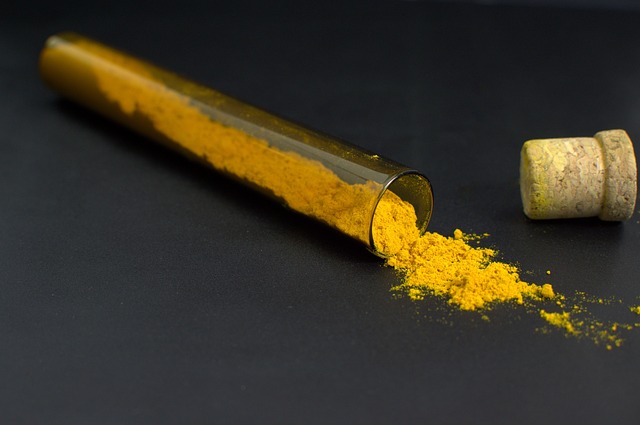
Turmeric Benefits
Turmeric has thousands of benefits for our health. It possesses anti-inflammatory properties, it elevates antioxidant defenses and protects the heart from arthritis complications, it relieves knee pain and ankle arthritis, it has anti-arthritic properties and regulates immune responses in arthritis. Turmeric regulates immune responses in arthritis and blocks the progression of arthritis, it acts on a genetic level to relieve arthritis and protects from infections in arthritis. It also protects stomach health in arthritis.
Is Turmeric Good For Knee Pain
A study examined the efficacy of turmeric as compared to ibuprofen in treating knee pain. This study included 367 patients who all had primary knee osteoarthritis. Patients were randomly assigned to Turmeric extracts and ibuprofen groups. They received 1,500 mg/day of Turmeric extract and 1,200 mg/day of ibuprofen for four weeks. They concluded that Turmeric extracts ” are as effective as ibuprofen for the treatment of knee osteoarthritis. The side effect profile was similar but with fewer gastrointestinal AE reports in the Turmeric extracts group.”
Another study examined the efficacy of a patented extract of turmeric, called Meriva “to define its efficacy in 50 patients with osteoarthritis (OA) at dosages corresponding to 200 mg curcumin per diem.” After 90 days of treatment, patients who received Meriva experienced a significantly larger decrease in overall pain, stiffness, and physical functionality. “The treatment costs (use of anti-inflammatory drugs, treatment, and hospitalization) were reduced significantly in the treatment group.” They concluded: “These results show that Meriva® is clinically effective in the management and treatment of osteoarthritis and suggest that the increased stability and better absorption of curcumin-induced by complexation with phospholipids have clinical relevance, setting the stage for larger and more prolonged studies.”
Turmeric Dosage For Knee Pain
There is no particular prescribed dose of turmeric defined for knee pain. On the basis of studies and reading reports, I’ve summarized the various ways of consuming turmeric that could benefit for Knee pain.
- Fresh Turmeric Root For Knee Pain Relief– 1-3g or ½ inch long piece of root sliced or chopped per day. It is recommended to add a pinch of black pepper for better absorption.
- Turmeric Powder For Relieving Knee Pain– 1 teaspoon or 1-2 g a day with a pinch of black pepper should be sufficient. However maximum dosage is 3 teaspoons a day.
- Turmeric Tincture For Knee Pain– 20-30 drops 3 times a day
- Turmeric Supplements For Knee Pain Relief- The recommended dosage for supplements is 300-400mg 2-3 times a day for standardized 95% curcumin extract.
How To Use Turmeric For Knee Pain Relief
- Turmeric Tea- 1-3 cups a day; add 1 tsp of fresh root or powder with a pinch of black pepper or cayenne pepper to one cup of boiled water
- Turmeric Milk- 1- 3 cups per day; add 1 tsp of fresh root or powder with a pinch of black pepper or cayenne pepper to one cup of milk and heat up for 15 min.
- Turmeric Golden Paste- 1 tsp 3 times a day; blend 5 fresh turmeric roots with 1 cup of water, 3 tsp of freshly ground black pepper or cayenne pepper, 1 tsp cinnamon powder, and 2 tsp ginger powder. Put all ingredients in a bowl and cook on low temperature with continuous stirring to get a thick consistency. Cooking should last around 3- 5 minutes. On the end add 50 ml of cold-pressed oil ( eg. Black seed oil, Flaxseed oil, Hemp oil, Olive oil, Coconut oil,…). Store it in a glass jar and refrigerated.
- BUY TURMERIC HERE
3. Tips For Knee Pain Relief- Ginger For Knee Pain
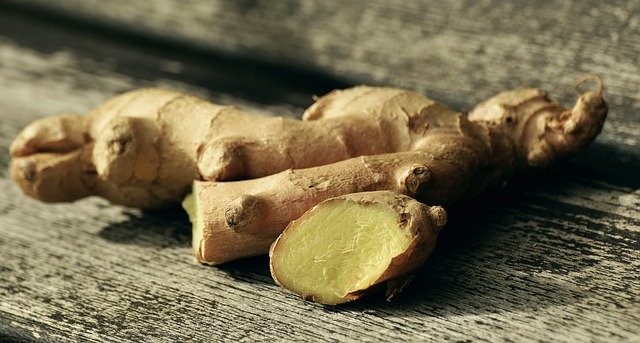
What Is Ginger Root
Ginger is a powerful medicine that has extraordinary anti-inflammatory abilities. Laboratory studies suggest that Ginger prevents more substances in the body to cause inflammation, including more enzymes targeted by pharmaceuticals drugs against Arthritis. Therefore, ginger relieves pain in the knee and arthritis, some studies even find that it is as effective as ibuprofen, a non-steroidal anti-inflammatory medicine.
What Is Ginger Health Benefits
Ginger has anti-inflammatory, anti-ulcer and antioxidant activities, as well as a small amount of analgesic property, it affects certain inflammatory processes at a cellular level, and is, therefore, one of the better alternatives for treating knee pain.
Is Ginger Good For You
Ginger has been shown to have anti-inflammatory properties similar to ibuprofen and COX-2 inhibitors such as celecoxib (Celebrex). It suppresses leukotrienes (inflammatory molecules) and switches off certain inflammatory genes.
A study in 2012 found that specialized ginger extract called Eurovita Extract 77 reduced inflammatory reactions in Rheumatoid Arthritis synovial cells as effectively as steroids.
Ginger And Knee Pain
Another study included 200 patients with Osteoarthritis ( OA ) and found that Eurovita Extract 77 significantly improved OA pain after standing and walking.
Ginger Dosage For Knee Pain Relief
There is no particular prescribed dose of ginger defined for knee pain. On the basis of studies and reading reports, I’ve summarized the various ways of consuming ginger that could benefit for Knee pain. In the studies mentioned above, they used 255 mg of Eurovita Extract 77 (equivalent to 3,000 mg dried ginger) twice daily.
- Fresh Ginger Benefits For Relieving Knee Pain- up to 3 grams/ 0. 10 oz a day, divided into 3 dosages
- Ground Ginger Powder For Fast Knee Pain Relief- up to 3 grams/ 0. 10 oz a day, divided into 3 dosages
- Ginger Tincture For Knee Pain- 20- 30 drops- 3 times per day
- Ginger Root Supplements For Knee Pain Relief- Varies, depending on the potency and manufacturers
- GET GINGER HERE
4. Home Remedy For Knee Pain: Boswellia For Joint Pain
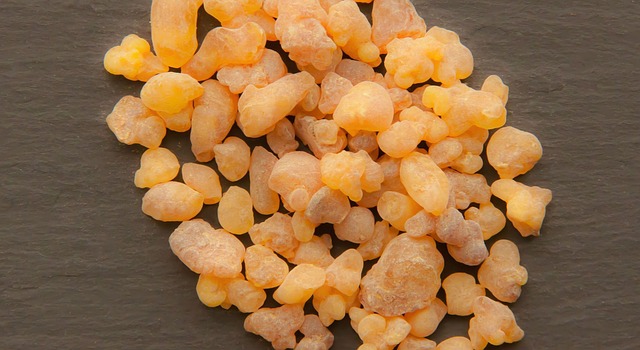
What Is Boswellia Serrata
Resin from Boswellia trees ( Boswellia serrata) has been used for centuries in Ayurvedic medicine for treating inflammatory and rheumatic conditions. It has anti-inflammatory and analgesic properties, it promotes the immune system and is especially effective for Rheumatoid Arthritis, an autoimmune form of arthritis, which greatly exhausts patients and is difficult to cure.
Boswellia Benefits Arthritis
After reviewing the results of 12 studies of rheumatoid arthritis, the researchers found that Boswellia was as effective as some medical treatments (for example, therapy with gold) and that it is useful especially for patients in whom arthritis does not respond to conventional drugs, for people who have this disease for a long time, and for children with juvenile chronic arthritis.
Boswellia also provides an improvement in osteoarthritis, which is proven to reduce pain and swelling, and significantly improves mobility. People who suffer from knee arthritis can walk longer distances if they take Boswellia.
Boswellia Dosage For Knee Pain Relief
Take commercial preparations with a standardized amount of active ingredients ( so-called Boswellic acids ), and follow the suggested use of manufacturers or health professional.
In osteoarthritis studies, researchers used 1000 mg of Boswellia resin ( called Salai Guggul ) per day, which contained 40 % ( 400 mg ) Boswellic acids. Studies have shown that the effects become visible after 2 months, however, effects are retained for some time after when the patient stops taking the herbal.
5. Celery Seed Benefits For Knee Pain Relief
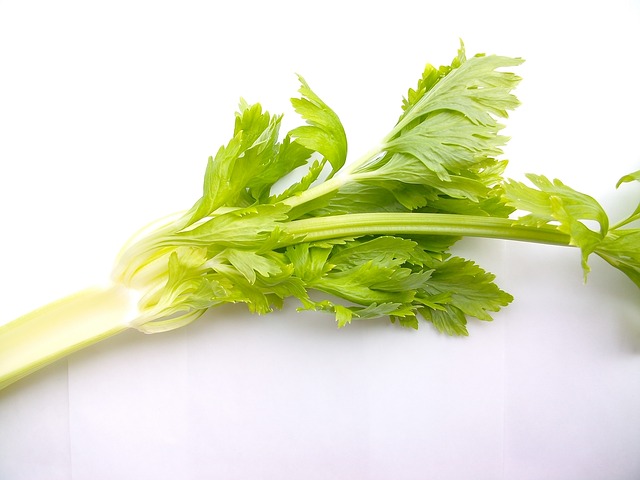
Celery Seed For Joint Pain
Celery ( Apium graveolens ) seeds are a traditional cure for all types of arthritis. It is particularly effective in the treatment of gout. This extremely painful form of arthritis usually affects one single joint, such as, for example, a thumb, which quickly becomes hot, swells, and inflame.
What Is Celery Seed For
Celery seeds have anti-inflammatory, diuretic, and analgesic properties, which all helps in the treatment of knee pain, arthritis and inflamed joint, muscle aches, or sciatica pain. A warm bath with 10-15 drops of celery oil can contribute to a significant improvement in knee pain.
Celery seeds are used to treat knee pain, joint pain (rheumatism), gout, hysteria, nervousness, and exhaustion. Celery also promotes relaxation and sleep, it increases sexual desire and is great for weight loss due to malnutrition. It alleviates headaches, it is great for loss of appetite and as a digestive aid. Celery seeds are also used to kill bacteria in the urinary tract and for regulating bowel movements. Women can use celery seeds to start menstruation, for treating menstrual discomfort and to reduce the flow of breast milk. It is also great for blood purification and for stimulating glands.
Celery Seed Dosage For Natural Knee Pain Relief
There is no particular prescribed dose of Celery seeds defined for knee pain. On the basis of studies and reading reports, I’ve summarized the various ways of consuming Celery seeds that could benefit for Knee pain.
- Celery Seed Tea For Relieving Knee Pain: Prepare a cup of tea by pouring boiling water over one teaspoon ( 0.5- 2 gr/0.017- 0. 070 oz ) of celery seeds and cook it for 10 minutes. Drink this tea 3 times per day.
- Celery Seed Extract For Knee Pain Relief: 1/2 tsp ( 1000 mg ) three times a day.
- Celery Seed Tincture For Knee Pain: 20- 30 drops up to 4 times a day
- GET CELERY PRODUCTS HERE
6. Gotu Kola Benefits For Relieving Knee Pain
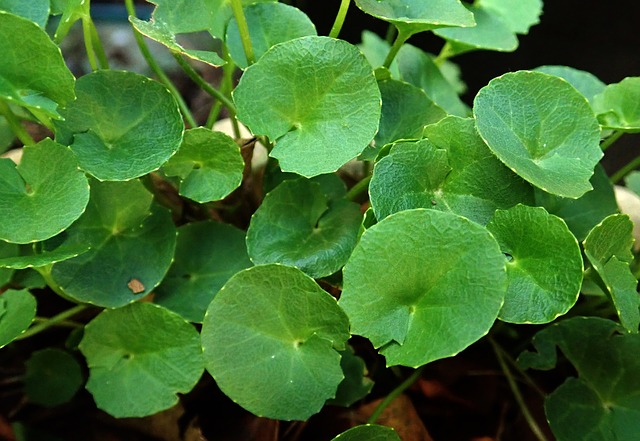
What Is Gotu Kola For
Gotu Kola ( Centella Asiatica ) or Pennywort can help improve the function of joints and relieve symptoms of arthritis and knee pain, because of it’s anti-inflammatory properties. Several studies confirmed the efficacy of Gotu Kola for knee pain. Researches have confirmed that pennywort (Gotu Kola) is effective for treating many conditions, including knee pain, swelling, and joint pain as well as anxiety, fatigue, and memory enhancement.
Gotu Kola For Arthritis
A study in 2008 revealed that Gotu Kola extract could potentially improve joint function, reduce inflammation, and alleviate symptoms of arthritis. Researchers believe that the basic mechanism of action of the herb regulates immunity and protects the joints from destruction.
What Is In Gotu Kola
Gotu Kola contains a high concentration of unique triterpenoid compounds, known as saponins, which are responsible for its many healing powers.
Benefits Of Gotu Kola
According to a study published in 2010, Gotu Kola is a potential herbal cure-all and has antinociceptive and anti-inflammatory properties, cognitive and antioxidant properties, antiepileptic properties, antidepressant properties, sedative, and anxiolytic properties. It is also great for wound healing, venous insufficiency, gastric ulcer, and could be useful in preventing radiation-induced behavioral changes during clinical radiotherapy.
The famous long-life of professor Li Ching-Yuen, who is supposed to have died aged 256 years and survived 24 consecutive women, is attributed exactly to drinking tea from Goku Kola. The Chinese have it as a herb that provides a long life, and it is also important in Ayurvedic medicine.
There is no doubt that Gotu Kola is one of the herbs that offers enormous health benefits, known as A Secret Fountain Of Yout, it helps us to cope with health problems such as knee pain, and at the same time, use of this herb prolongs life, due to its overall health benefits.
Gotu Kola Dosage For Knee Pain Relief
- Gotu Kola Herb: Dosages of Gotu Kola in crude form range from 1.5 to 4 g/day.
- Gotu Kola Powder: 1/2- 1 teaspoon twice daily
- Gotu Kola Tincture: 20- 30 drops up to 4 times a day
- Gotu Kola Supplements: Varies, depending on the potency and manufacturers, on average, up to 3 capsules daily are advised ( up to 1200 mg cc )
- CHECK THE BEST OFFER OF GOTU KOLA HERE
7. How To Get Rid Of Knee Pain? Make Horsetail Tea For Natural Knee Pain Relief
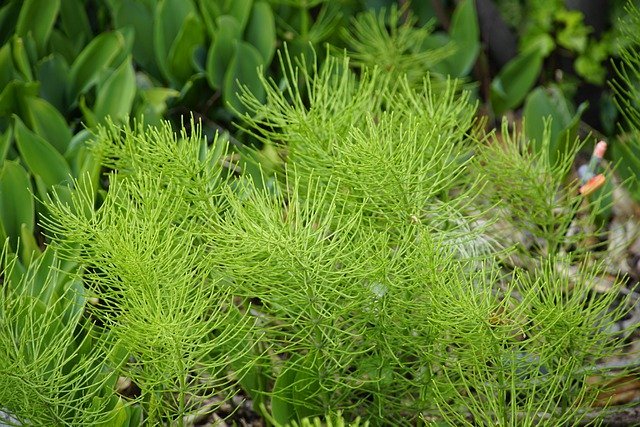
What Is Horsetail For
Horsetail ( Equisetum arvense ) is known for its anti-inflammatory, antioxidant, analgesic, antibacterial and antimicrobial, coagulant, demulcent, diuretic, and astringent properties. Horsetail is rich in silica and mineral salts, it can increase your calcium absorption and use, which makes it a powerful agent to overcome knee pain, rheumatoid arthritis, osteoarthritis, and osteoporosis.
What Is In Horsetail & What Is Horsetail Benefits
Horsetail has many medicinal nutrients, including calcium, flavonoids, saponins, tannins, fatty acids, and silica. Those properties benefits for:
- Knee Pain ( osteoporosis, arthritis, rheumatoid arthritis, osteoarthritis )
- Bladder Issues ( it can alleviate the symptoms of urinary tract infection )
- Cognitive And Memory Performance ( it can help to improve long-term and short-term cognitive and memory performance )
- Diabetes ( studies confirmed its efficacy in lowering blood sugar levels )
- Kidney Stones ( it can help stop the formation of kidney stones and even help to dissolve already formed stones )
- Skin Problems ( it can help to cure wounds, burns, acne, skin rashes, bleeding, psoriasis,..)
- Edema ( it’s been approved by the German Commission for use as a diuretic for edema )
- Weak Nails ( minerals in horsetail are beneficial for nail health, it can heal white spots and makes nails stronger)
- Healthy Hair ( it can help stop dandruff, split ends, hair loss and it helps with hair health and growth )
- Bronchitis ( it may help stop dry coughs, nasal congestion, and bronchitis symptoms )
- Boils And Carbuncles ( anti-inflammatory and antimicrobial properties of horsetail can help stop the infection and inflammation that comes with carbuncles and boils )
- Foot Infections And Chilblains ( it’s been used for centuries to treat frostbite, chilblains, and athlete’s foot )
- Mouth And Throat ( can help stop inflamed tonsils, mouth sores, bleeding gums, and gingivitis )
Horsetail For Bones
Studies show that it can have a huge impact on bone density, it can stop fractures and improve bone strength. Several studies have shown that silicon intake is linked to great bone density.
Horsetail Dosage For Knee Pain Relief
- Make Horsetail Tea: 2 to 3 tsp, 3 times daily- Pour hot water onto herb and steep for 5 to 10 minutes.
- Horsetail Tincture: 20- 30 drops, up to 3 times a day
- Horsetail Supplements: use a standardized dose that contains 10 to 15% silica
- Herbal Poultices: 10 g of herb per 1-liter water daily
- HERE IS THE BEST OFFER OF HORSETAIL
8. Cure Knee Pain With Stinging Nettle
What Is Stinging Nettle For
Stinging nettle ( Urtica dioica ) has been used medicinally for centuries, dating back as far as Ancient Greece. It has a number of helpful health benefits, including antioxidant, antimicrobial, anti-ulcer, astringent and analgesic properties. Throughout history, it has been used as a diuretic and for treating painful muscles and joints, eczema, arthritis, gout, and anemia.
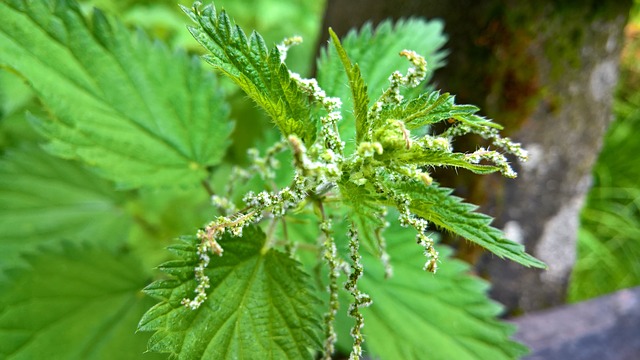
What Is Stinging Nettle Good For
Studies and traditional use show that using stinging nettle help with the following:
- Knee Pain
- Bleeding
- Eczema
- Hay Fever
- Benign Prostatic Hyperplasia And Urinary Problems
- Hair Health
- Promote Lactation In Nursing Mothers
- Help Control Blood Sugar In Diabetes Patients
- Treat Disorders Of Kidneys
- Diarrhea
- Asthma
- Allergies
- Wounds
- Hemorrhoids
- Blood Purifier
- ….
Stinging Nettle For Joint Pain
The antimicrobial, antioxidant, analgesic and anti-ulcer properties of stinging nettle have been studied in several countries. Stinging nettle is high in potassium, calcium, and magnesium and may be helpful for gout.
One of the studies conducted in Germany found that “hox alpha, a new extract of stinging nettle leaf, contains an anti-inflammatory substance that suppressed several cytokines in inflammatory joint diseases.”
Stinging Nettle For Arthritis
Researchers say that Stinging nettle can be an effective therapy to relieve the pain of arthritis. A study conducted at the University of Plymouth found that Stinging nettle not only significantly reduced pain, but also that the level of that pain stayed lower through most of the treatment.
Stinging Nettle Dosage For Knee Pain Relief
- Stinging Nettle Tea: 1 to 2 tsp, 3 times daily- Pour hot water onto herb and steep for 5 to 10 minutes.
- Stinging Nettle Tincture: 20- 30 drops, up to 3 times a day
- Stinging Nettles Supplement: up to 1,300 mg daily
- Stinging Nettle Leaves: apply directly on the skin, up to 3 times per day for 7 days…take 2 days of break and continue in that order…improvements should be soon visible.
- GET STINGING NETTLE HERE
9. Devil’s Claw For Knee Pain
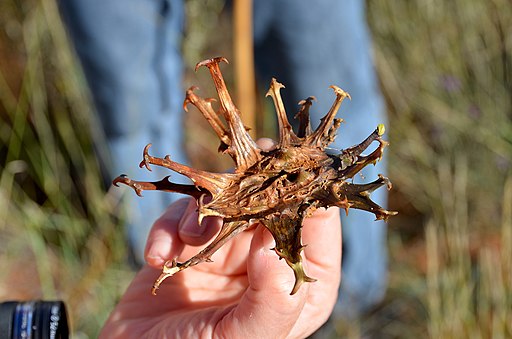
What Is Devil’s Claw For
Devil’s claw ( Harpagophytum procubens) has anti-inflammatory properties and is a well known and proven cure for osteoarthritis. Several studies have demonstrated its usefulness – especially in osteoarthritis in the knee and/or hip. Harpagoside, one of the active ingredients in the devil’s claw can help to reduce pain and inflammation in joints.
Devil’s Claw For Arthritis
In some of these studies, Devil’s claw was compared with pharmaceutical analgesics and found that this herb is as effective as pharmaceutical drugs, but has fewer side effects. Laboratory tests suggest that Devil’s claw may provide more than just symptom mitigation – it seems to inhibit certain processes that damage the cartilage and trigger changes in the joints that are characteristic of osteoarthritis. Clinical trials suggest that pain and other symptoms of osteoarthritis begin to decrease after about 2 months of taking the herb.
Devil’s Claw Dosage For Knee Pain Relief
- Devil’s Claw Tea: 1 teaspoon per cup of water, up to 3 cups a day
- Devil’s Claw Tincture: 20- 30 drops, up to 3 times a day
- Devil’s Claw Supplements: at least 50 mg of Harpagoside per day. Varies, depending on the potency and manufacturers, on average, up to 3 capsules daily are advised
- DEVIL’S CLAW IS WAITING FOR YOU HERE
Wanna Learn More About Knee Pain? Click Here
Click Here If You Want To See Special Grandma’s Cure For Knee Pain
References:
- Wikipedia
- Efficacy and safety of Curcuma domestica extracts compared with ibuprofen in patients with knee osteoarthritis: a multicenter study: https://www.ncbi.nlm.nih.gov/pubmed/24672232
- Product-evaluation registry of Meriva®, a curcumin-phosphatidylcholine complex, for the complementary management of osteoarthritis: https://www.ncbi.nlm.nih.gov/pubmed/20657536
- The complete book of herbs; Reader’Digest(Australia)Pty Limited 2008
- Pharmacological Review on Centella asiatica: A Potential Herbal Cure-all: https://www.ncbi.nlm.nih.gov/pmc/articles/PMC3116297/
Disclaimer: All information presented on this website is for informational purposes only. These statements have not been evaluated by the Food and Drug Administration. This website is not intended for diagnosis, treatment, treatment or prevention of disease and is not intended for substitution treatment. This information is not meant to cover all possible uses, precautions, interactions or adverse effects. This information may not fit your specific health circumstances. Never delay or disregard seeking professional medical advice from your doctor or other qualified healthcare providers because of something you have read on whatcure.com. Please seek the advice of a healthcare professional for your specific health concerns.







